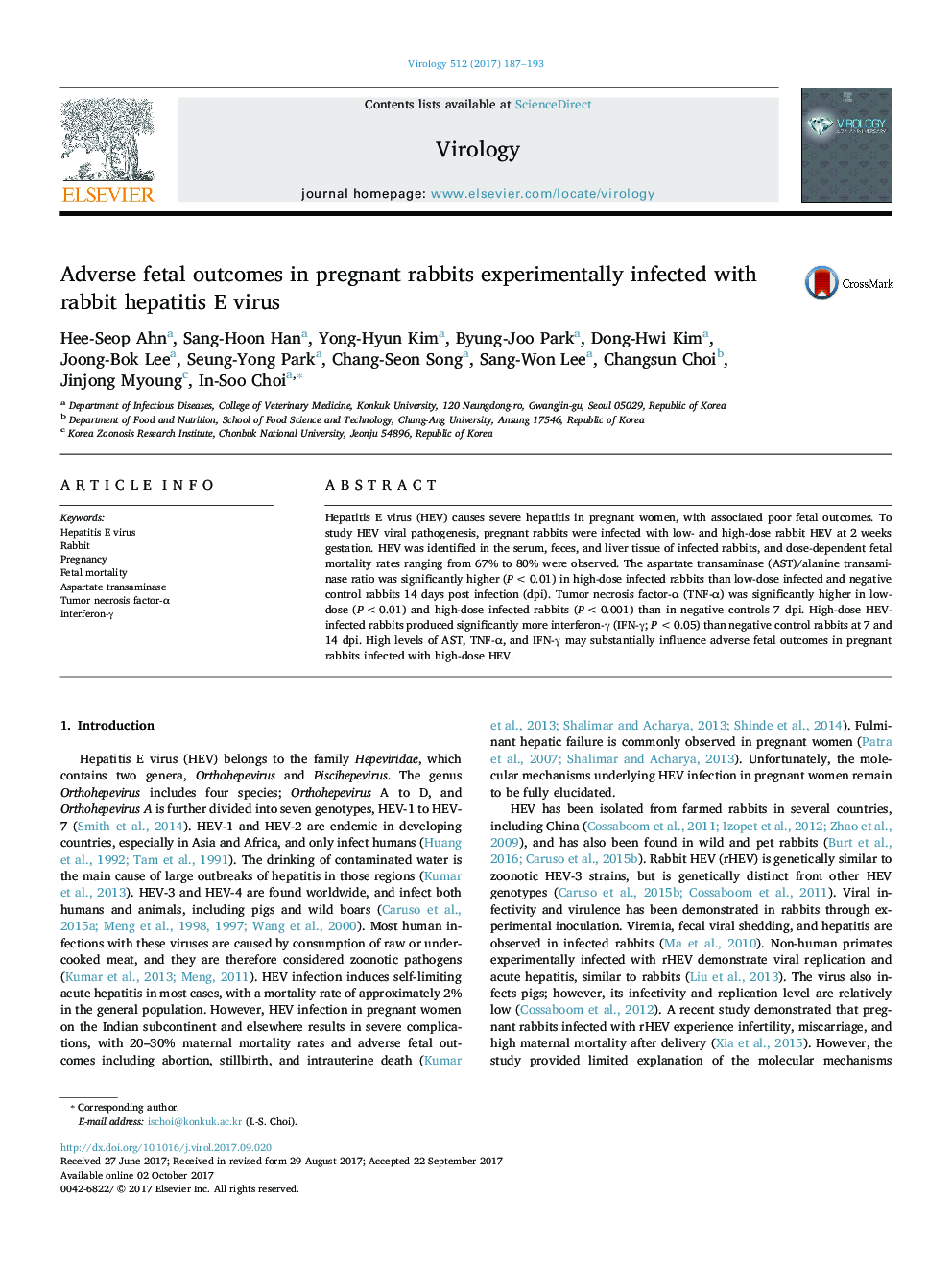| Article ID | Journal | Published Year | Pages | File Type |
|---|---|---|---|---|
| 5674855 | Virology | 2017 | 7 Pages |
â¢Pregnant rabbits were experimentally infected with rabbit hepatitis E virus (HEV).â¢Adverse fetal outcomes were observed after HEV infection.â¢Infected rabbits had elevated aspartate transaminase/alanine transaminase ratios.â¢Infected rabbits had high production of tumor necrosis factor-α and interferon-γ.
Hepatitis E virus (HEV) causes severe hepatitis in pregnant women, with associated poor fetal outcomes. To study HEV viral pathogenesis, pregnant rabbits were infected with low- and high-dose rabbit HEV at 2 weeks gestation. HEV was identified in the serum, feces, and liver tissue of infected rabbits, and dose-dependent fetal mortality rates ranging from 67% to 80% were observed. The aspartate transaminase (AST)/alanine transaminase ratio was significantly higher (P < 0.01) in high-dose infected rabbits than low-dose infected and negative control rabbits 14 days post infection (dpi). Tumor necrosis factor-α (TNF-α) was significantly higher in low-dose (P < 0.01) and high-dose infected rabbits (P < 0.001) than in negative controls 7 dpi. High-dose HEV-infected rabbits produced significantly more interferon-γ (IFN-γ; P < 0.05) than negative control rabbits at 7 and 14 dpi. High levels of AST, TNF-α, and IFN-γ may substantially influence adverse fetal outcomes in pregnant rabbits infected with high-dose HEV.
